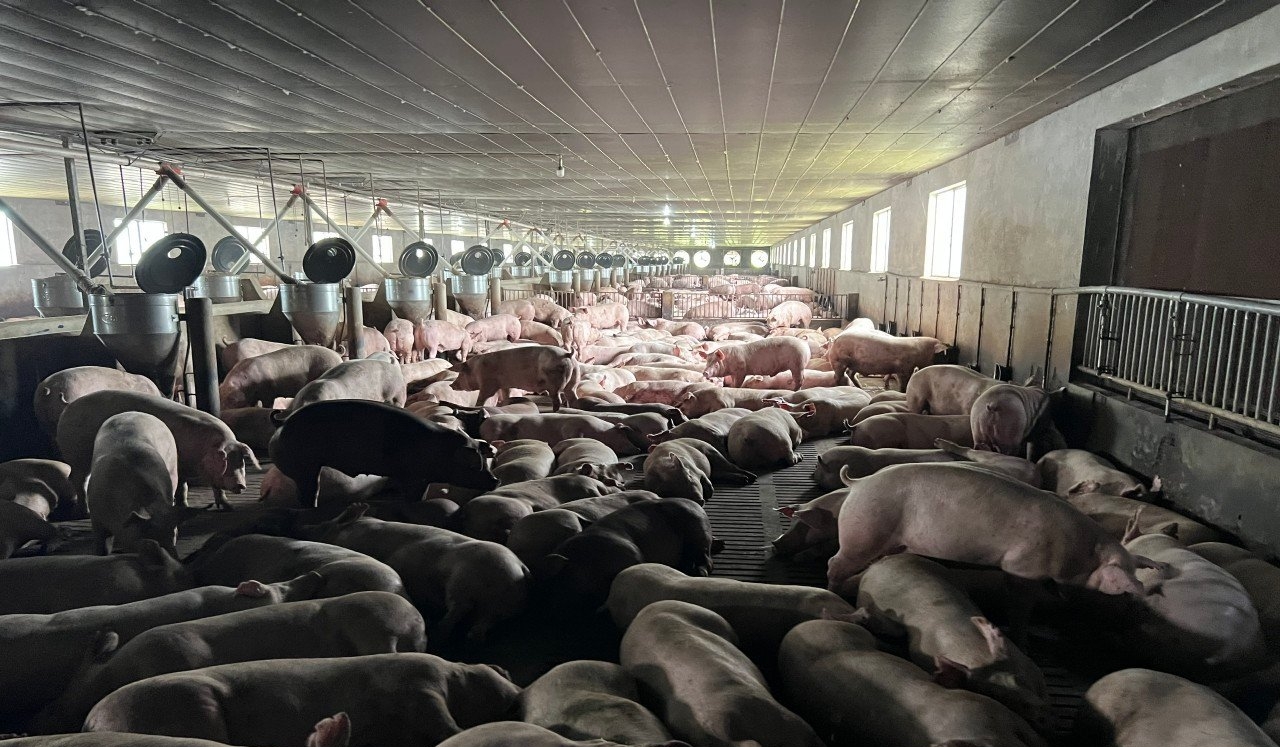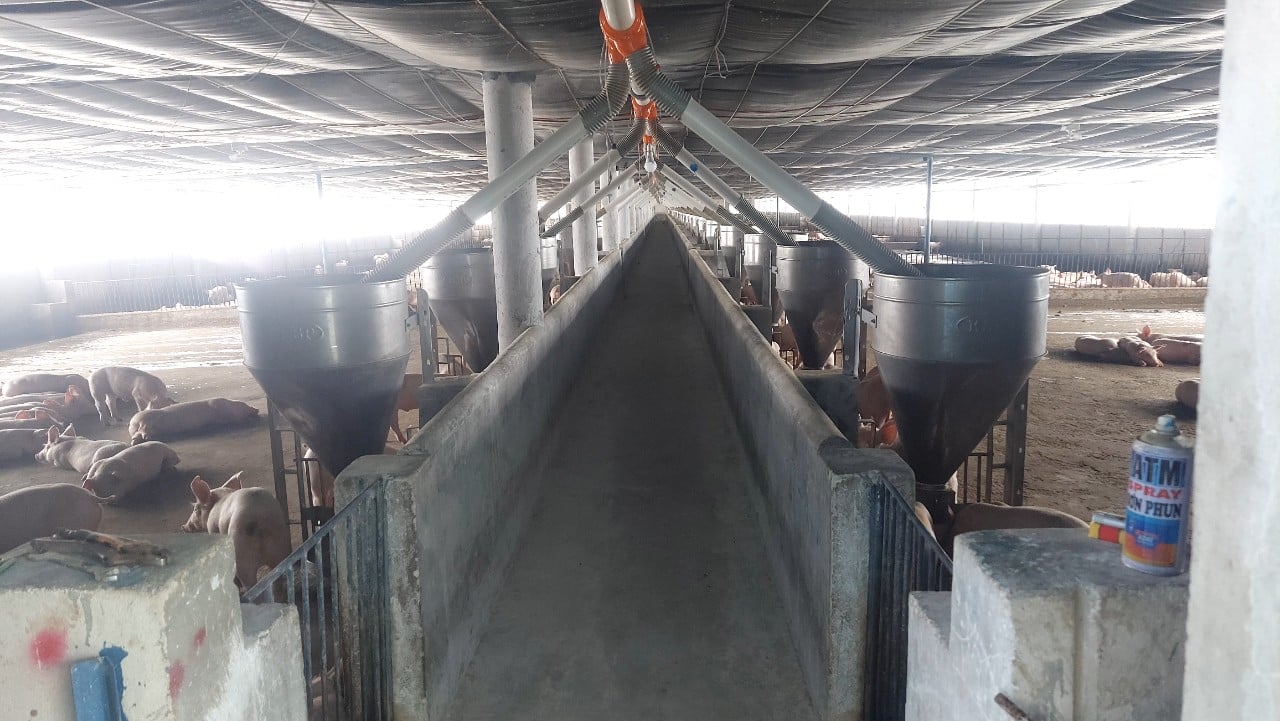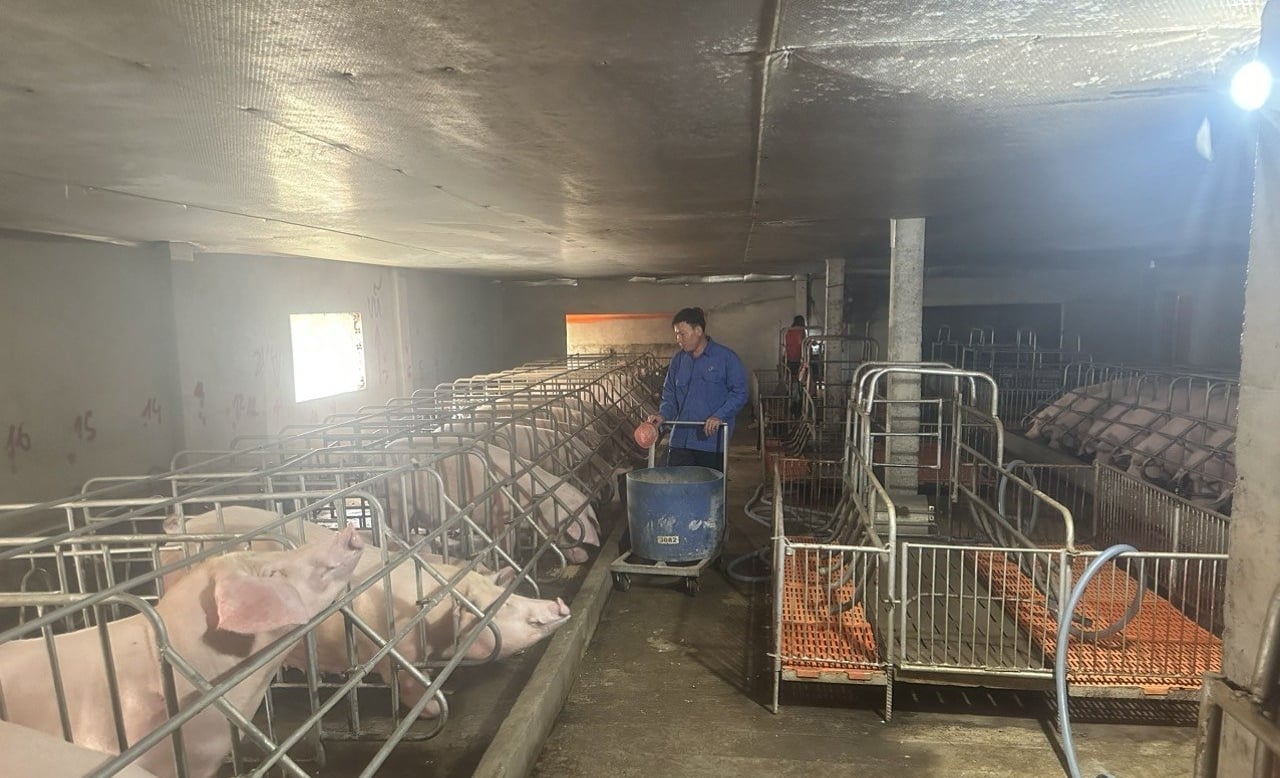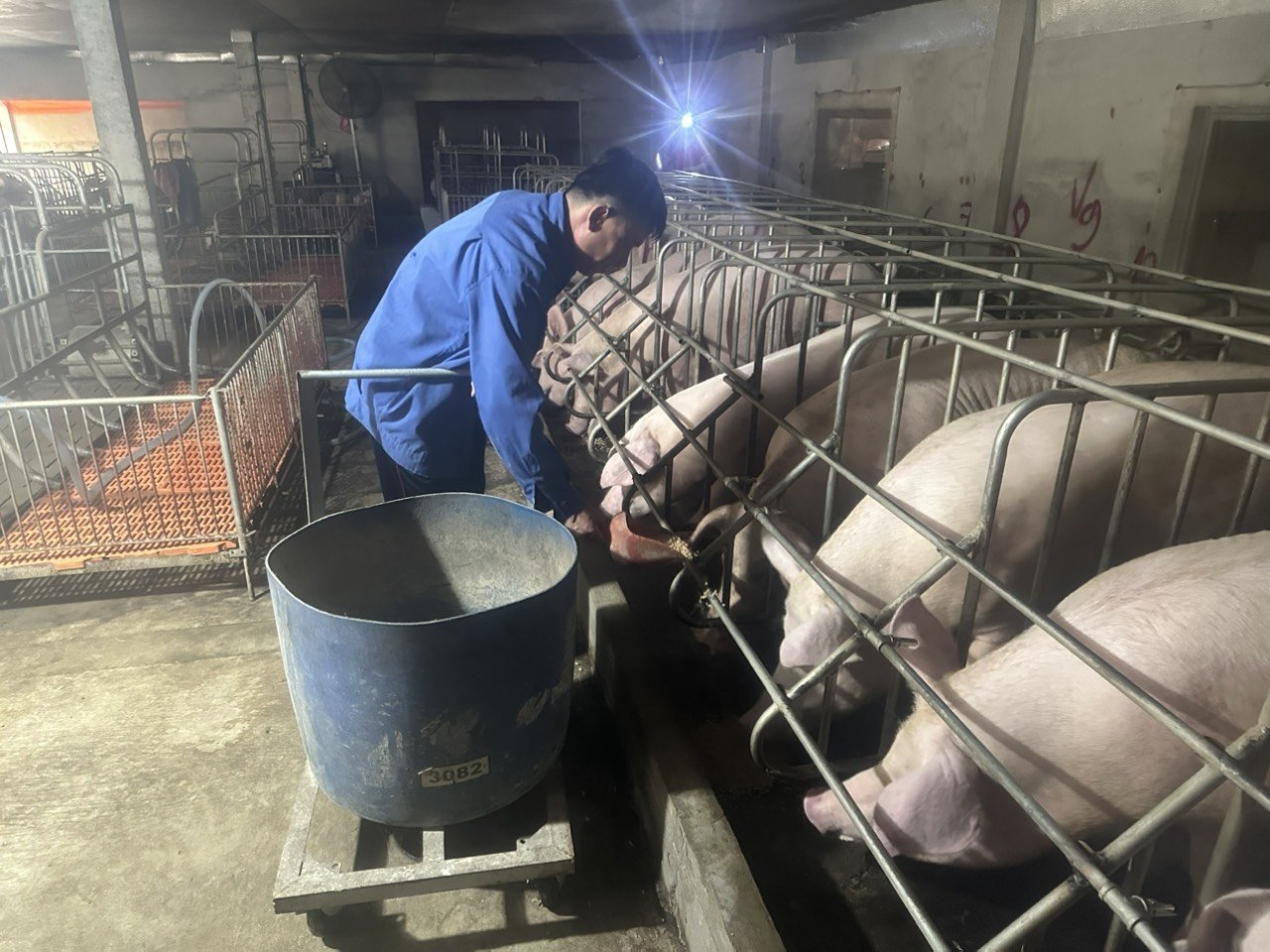June 1, 2025 | 17:55 GMT +7
June 1, 2025 | 17:55 GMT +7
Hotline: 0913.378.918
June 1, 2025 | 17:55 GMT +7
Hotline: 0913.378.918

Inside the commercial pig farm of Mr. Dang Huu Duc, Head of Phuoc Sang Commune Pig Raising Cooperative Group. Photo: Tran Trung.
Several farming households in Binh Duong have recently made the bold transition from open-barn pig farming to cold-barn pig farming with barn floor technology, water conservation, and a closed barn equipped with a mist spray system, cooling fan, and an automatic silo feeding and drinking system.
This model has helped reduce disease transmission, and a less contaminated environment consequently contributes to a robust economy. The biosafety pig farming model of Mr. Dang Huu Duc, director of the Pig Farming Cooperation Group of Phuoc Sang commune is one of that particularity.
Within the construction of 1 hectare, there are three barn rows with a total area of 3,600 m2 per row.
The barn has a nature-friendly design, with enhancements for warming in winter and cooling in summer, and three-quarters of the area of each cell is covered by biological bedding and automatic feeding troughs. The agricultural area is divided into sections: the breeding area for sows with hundreds of sows (producing 3,000 to 3,500 breeding pigs) and two rows of pig breeding pens, each row with 60 cages, a 60m2/cell area (raising 5,000 to 7,000 pigs for meat/year).

Thanks to raising pigs in cold farms according to biosecurity, it contributes to disease prevention, does not pollute the environment, and has high economic efficiency. Photo: Tran Trung.
Mr. Duc is concerned about environmental sanitation. The stables are kept spotless and well-ventilated at all times. Waste water is treated and composted to produce biogas, which is then used to generate electricity and fuel. Pigs are completely immunized, have high resistance, and increase agricultural productivity.
Mr. Duc added secondary EM, soybean residue, and fish protein to the cereal in order to reduce food costs and capitalize on abundant local by-product sources, such as banana stems from Unifarm An Thai. The purpose of this barn is to aid swine digestion, prevent raw excrement, and reduce feces aromas.
According to Mr. Duc, secondary EM has a naturally aromatic flavor, so it encourages piglets to consume more. When piglets reach 50 kilograms or more, however, mixing composted rice bran with diet should be limited because the pig's intestinal microflora is fully developed and well-digested at this weight. Too much will give the swine an upset stomach. Every day, 500 adult hogs consume an average of 800 kg of cereal. This method reduces the quantity of bran required by 1/3, saving him over 3 million VND per day for 500 pigs.

The breeding area for sows is separated for convenient monitoring and care. Photo: Tran Trung.
Mr. Duc added that in the final months of 2016 and the beginning of 2017, in response to low domestic pig prices adversely affecting pig farmers, he mobilized with the support of Phuoc Sang commune leaders to encourage small pig farmers to unite in their agricultural activities.
In order for the group members' pork products to be consumed consistently on the market, he proposed and was approved by the members to implement a pig husbandry process that ensures safety by preventing antibiotic residues from reaching the piglets and consumers. Since then, the entire process of rearing pigs at the nest, from the time the piglets are born until they are sold, has been closed.

Taking advantage of the abundant local sources of waste by-products, Duc himself mixed bran to feed breeding sows, contributing to reducing costs and limiting disease risks. Photo: Tran Trung.
Currently, the cooperative group comprises seven members with a combined flock of more than 10,000 hogs, supplying the market with 50 to 60 tons of safe pork per month. In order to diversify the production of safe pork products, the cooperative group has set up pork-selling locations at Phuoc Sang market and in the adjacent area. In the near future, additional stalls selling secure porcine products will open in the communes of Tan Hiep, An Linh, and An Thai...
Mr. Nguyen Van Tha, Chairman of Phuoc Sang Commune Farmers' Association, stated that the closed pig rearing model in a biosafety cold barn system of the Cooperative Group headed by Mr. Duc has been effective in preventing the spread of infectious diseases. In fact, it helps piglets grow rapidly and effectively prevents disease. Simultaneously, raised piglets have a low loss rate and a quicker growth rate, allowing producers to save money and increase their profits.
"In addition to the industry's determined participation with numerous solutions, livestock farmers have primarily saved themselves by linking large-scale production, biosafety, and advanced technology; this is a model." Mr. Nguyen Van Tha emphasized the replication of regional models.
Translated by Linh Linh

(VAN) Several scientists and farmers are experimenting with soil treatment in some key durian-growing regions such as Cai Lay (Tien Giang), Dak Song, Gia Nghia, and Dak R’lap (Dak Nong).
/2025/05/25/4127-3-073637_820.jpg)
(VAN) Thanks to the promotion from an FAO-implemented project, vegetable production in greenhouses in Moc Chau has seen strong development, from 1.5 hectares in 2021 to nearly 50 hectares in 2024.

(VAN) FAO has recently supported USD 140,000 to implement the project 'Risk mitigation human-animal interface risks through disease control initiatives in pig farming.'

(VAN) The People's Committee of Tra Vinh province has approved an adjustment to the investment policy for the Green Hydrogen Plant project, increasing its area to approximately 52.76 hectares.
![Reducing emissions from rice fields: [2] Farmers’ commitment to the soil](https://t.ex-cdn.com/nongnghiepmoitruong.vn/608w/files/news/2025/05/05/dsc08881jpg-nongnghiep-140632.jpg)
(VAN) Clean rice cultivation model in Thuong Tan commune, Bac Tan Uyen district, is assisting local residents in achieving sustainable agriculture by substantially reducing costs, increasing productivity, and protecting the environment.

(VAN) At the conference to disseminate Resolution No. 68, AgriS introduced its digital agricultural ecosystem and reaffirmed its commitment to accompanying the Government in promoting private sector development and sustainable agriculture.

(VAN) 'Blue Ocean - Blue Foods' initiative is designed to restore marine ecosystems and establish sustainable livelihoods for local communities by cultivating a minimum of 1,000 hectares of cottonii seaweed in the first three years.